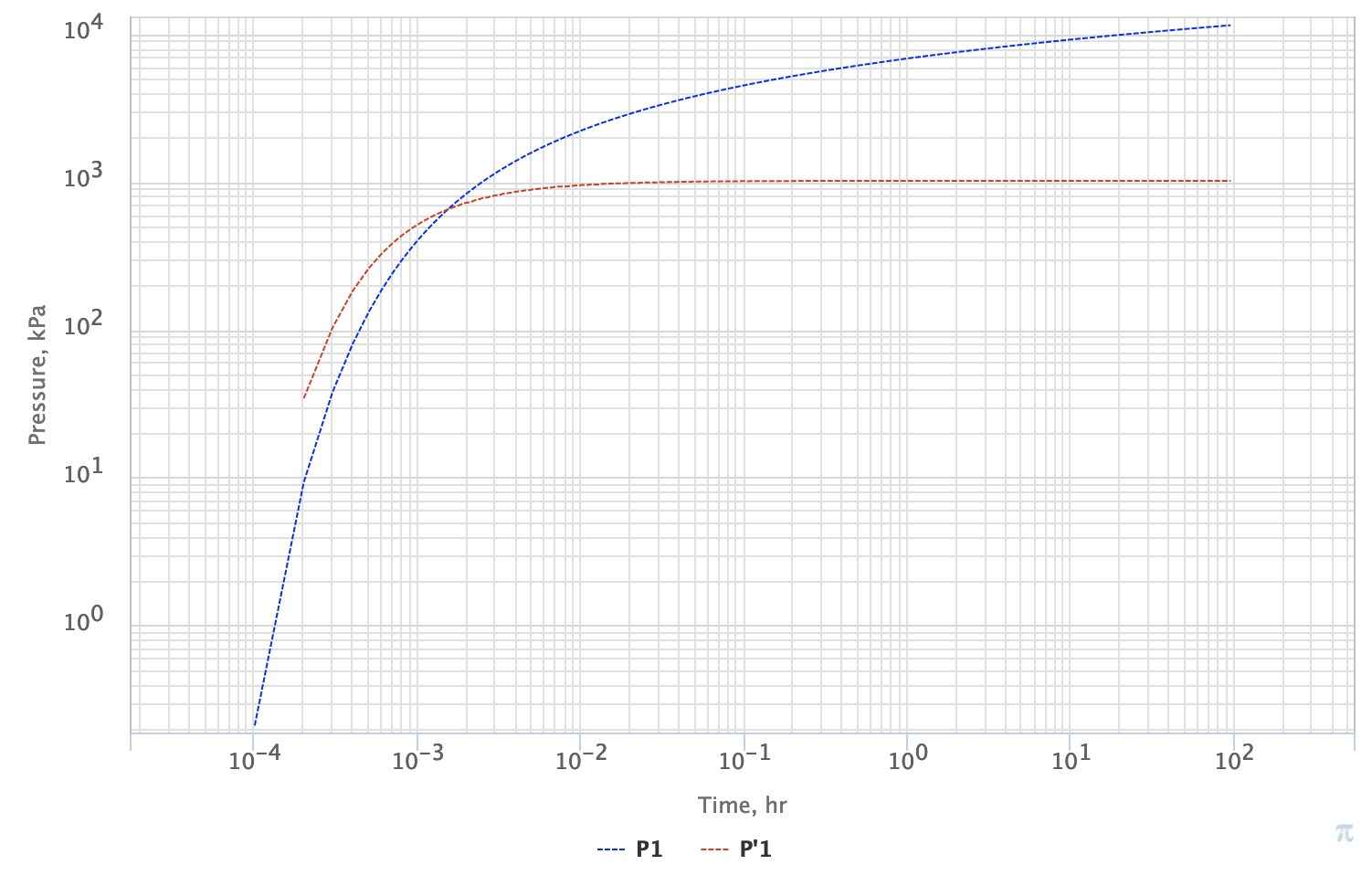Motivation
Reservoir pressure dynamics away from wellbore and boundaries is sensitive to the two specific complex reservoir properties: transmissibility \sigma and pressure diffusivity \chi.
In case the reservoir flow has been created by a well (vertical or horizontal) it will trend to form a radial flow away from boundaries and well itself.
In this case a pressure drop and well flowrate can be roughly related to each other by means of a simple analytical homogeneous reservoir flow model with wellbore and boundary effects neglected.
Since the well radius is neglected the well is modeled as a vertical 0-thickness line, sourcing the fluid from a reservoir, giving a model a specific name Line Source Solution.
Inputs & Outputs
| Inputs | Outputs | ||
|---|---|---|---|
q_t | total sandface rate | p(t,r) | reservoir pressure |
{p_i} | initial formation pressure | ||
\sigma | transmissibility | ||
\chi | pressure diffusivity | ||
Physical Model
| Radial fluid flow | Homogenous reservoir | Infinite boundary | Zero wellbore radius | Slightly compressible fluid flow | Constant rate production |
|---|---|---|---|---|---|
p(t, r) | M(r, p)=M =\rm const \phi(r, p)=\phi =\rm const h(r)=h =\rm const c_r(r)=c_r =\rm const | r \rightarrow \infty | r_w = 0 | c_t(p) = c_r +c = \rm const | q_t = \rm const |
Mathematical Model
| Motion equation | Initial condition | Boundary conditions | |||||||||
|---|---|---|---|---|---|---|---|---|---|---|---|
|
|
|
| ||||||||
Computational Model
| {\rm Ei}(\xi) – exponential integral |
Approximations
\displaystyle t \gg \frac{r^2}{4\chi} | ||
|
Diagnostic Plots
| Pressure Drop | |||||
|
| ||||
|
| ||||
Fig. 1. PTA Diagnostic Plot for LSS pressure response for the 0.1 md reservoir in a close line source vicinity (0.1 m), which is about a typical wellbore size. One can easily see that with wellbore effects neglected even for a very low permeability reservoir the IARF regime is getting formed very early at 0.01 hr (36 s). | |||||
See also
Physics / Fluid Dynamics / Radial fluid flow
[ Radial Flow Pressure @model ] [ 1DR pressure diffusion of low-compressibility fluid ] [ Exponential Integral ]
